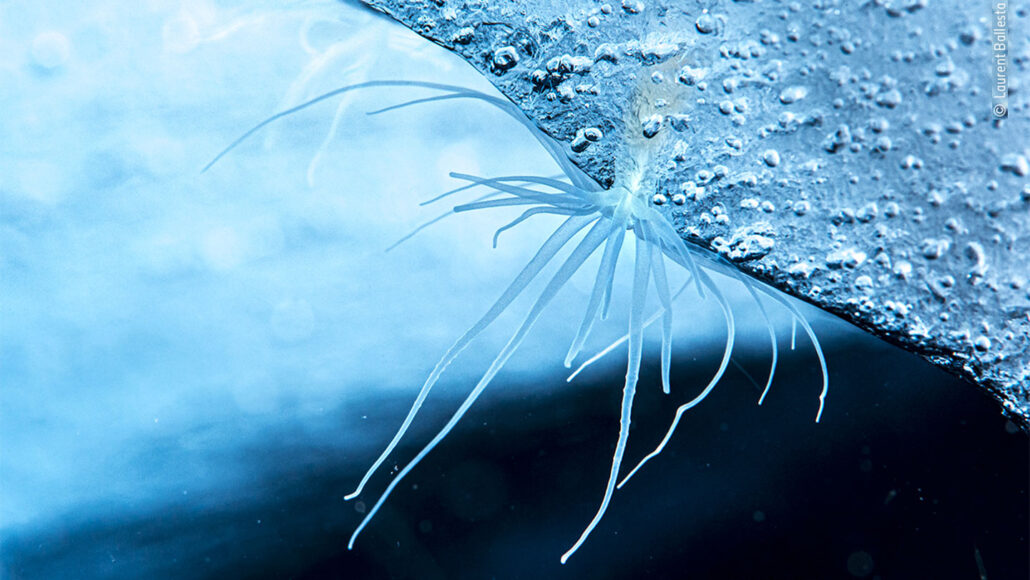Questions for ‘A weird upside-down world lurks beneath Antarctica’s ice’

This anemone lives in a burrow carved into the underside of an Antarctic ice shelf. Photographer Laurent Ballesta captured a rare look at this ice-dweller while on a dive. The photo is part of a portfolio for which Ballesta won Wildlife Photographer of the Year 2022 from the London Natural History Museum.
© Laurent Ballesta